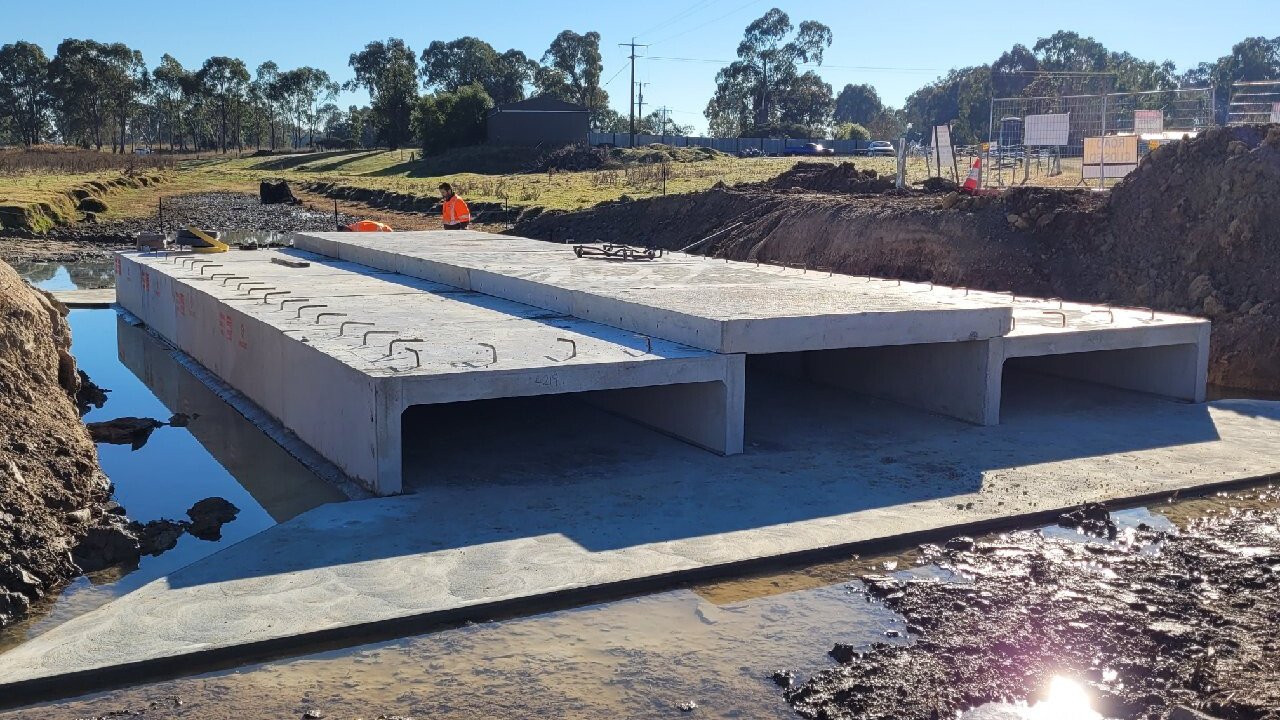Precision Pad Construction for Stable Foundations
Precision Pad Construction for Stable Foundations
Blog Article
Culvert Installation Facilitated: Step-by-Step Guide for Success
Mounting culverts might feel like an uncomplicated job, yet making sure a successful result calls for mindful planning and implementation. From picking the ideal culvert size to integrating proper water drainage steps, each step in the installment process plays an essential function in the performance and long life of the culvert system. By adhering to a systematic method and focusing on essential information, the installation can proceed efficiently, decreasing prospective concerns down the line. Keep tuned to reveal the vital steps and considerations that can make culvert setup a seamless and successful endeavor.
Choosing the Right Culvert Size
Picking the ideal culvert size is important for guaranteeing efficient water flow and architectural integrity in culvert setup projects - Pad Construction. The size of the culvert directly impacts the flow ability of water with the framework. A culvert that is also little can bring about flooding and overflow, while one that is also huge might result in decreased water velocity, possibly causing sediment accumulation and blockages
To establish the appropriate culvert size, aspects such as the watershed area, peak circulation rates, and hydraulic effectiveness demand to be carefully taken into consideration. Calculations based upon these criteria aid in picking a size that can appropriately deal with the expected water quantity while minimizing the threat of blockages and architectural failing.
It is vital to seek advice from design guidelines and standards to ensure that the selected culvert dimension fulfills the job needs and neighborhood policies (Pad Construction). By selecting the best culvert size, job supervisors can maximize water flow, stop prospective concerns, and enhance the total efficiency and long life of the culvert setup
Preparing the Setup Website
Effective culvert installation demands thorough prep work of the setup site to guarantee ideal structural support and functionality. Prior to starting the installment process, it is crucial to remove the website of any debris, plants, or obstructions that can hinder the culvert's positioning.
Moreover, it is crucial to think about factors such as dirt structure, groundwater levels, and environmental influences when preparing the installation website. Conducting a complete site analysis can aid identify any type of possible challenges or dangers that may influence the culvert's efficiency. By making the effort to prepare the setup website appropriately, you can help guarantee a successful culvert installment that fulfills architectural demands and ensures lasting functionality.
Placing the Culvert Properly

The quality at which the culvert is placed is essential for keeping a proper slope for water flow. A steady incline assists protect against merging and advertises reliable drainage. Furthermore, the culvert needs to be oriented correctly to ensure that the inlet and electrical outlet are in the appropriate areas. This orientation is crucial for the culvert to function successfully in managing water circulation.
Backfilling and Condensing the Soil
Appropriate backfilling and compaction of the soil around the culvert is important to guarantee security and protect against prospective problems in the future. As soon as the culvert is properly put, the next essential step is to backfill the location around it with ideal product. The backfill material should be devoid of rocks, debris, and raw material to prevent damage to the culvert. It is suggested to use granular material such as sand or crushed rock for backfilling, as it gives good water drainage and compaction go to this website residential or commercial properties.
Compaction helps in reducing the opportunities of negotiation and makes certain uniform assistance around the culvert. It is vital to compact the dirt equally on all sides of the culvert to preserve its architectural integrity.
Appropriate backfilling and compaction not just provide stability to the culvert but likewise help in protecting against soil erosion and preserving the long life of the culvert system.
Ensuring Appropriate Water Drainage Integration
Integrating efficient drainage options plays an important role in the total capability and durability of culvert setups. Appropriate water drainage assimilation is crucial for managing water flow, avoiding disintegration, and guaranteeing the structural integrity of the culvert system. To attain this, it is important to develop an extensive drain strategy that takes into consideration aspects such as the quantity of water anticipated, the topography of the location, and the kind of dirt existing.

Additionally, integrating functions like disintegration control measures, such as riprap or plants, can additionally enhance the performance of the drain system. By very carefully preparing and carrying out these drain solutions, culvert installations can work efficiently and stand up to the test of time.
Final Thought
Finally, appropriate culvert installation is important for maintaining reliable water drainage systems. By selecting the ideal culvert dimension, preparing the installation website, positioning the culvert properly, backfilling and compacting the dirt, and guaranteeing appropriate drainage assimilation, success can be accomplished. Adhering to these steps will certainly assist ensure the longevity and performance of the culvert, ultimately adding to the total success of click now the water drainage system.
Report this page